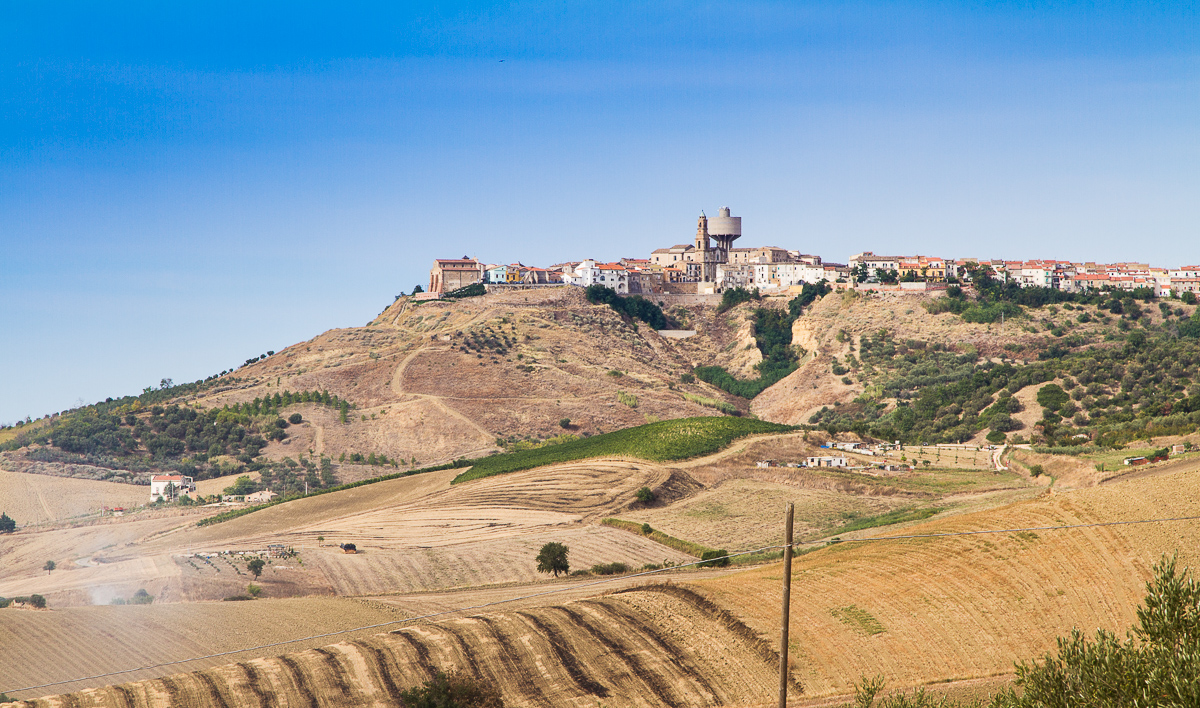Beautiful Molise!
The mountainous and sparsely populated region of Molise has only been recognized since 1963. Before this, Molise was an isolated province of Abruzzi. Today this otherwise forgotten region is bordered by Abruzzi on the north, Lazio to the west, Campania and Apulia to the south and east. To the northeast, Molise has a small coastline bordering the Adriatic.

Thus far, it seems that tourists have neglected Molise, but there are many sites nestled in the mountains that are worth visiting. Molise is home to beautiful abbeys, churches and castles as well as impressive ancient ruins far off the tourist track.

Molise is the ancestral home of the Samnites – a fierce warlike people that would regularly defeat the Roman Legions. However, overtime the Samnites were absorbed into Roman culture but the intense battles fought between them are still remembered today. Molise got its name after the fall of Rome, during the period when local inhabitants, invading Lombards and adventuring Normans vied for the region. Molise was both the name of a castle as well as the name of a local warlord family. From the High Middle Ages until the Italian unification in 1861, Molise was part of the Kingdom of Naples, with power being split between Bourbon and Spanish overlords. In 1963, the province of Molise became an official Region of Italy.

Regional Food and Wine
Molise with its numerous traditions with in every small town and with its own local rustic ingredients can hold its own proudly. In the mountainous interior lamb, kid, mutton and ewe are all favorite meats and are the basis for Molisian specialties like Cacio e Uova, cooked in an earthenware pot and served with egg and sharp cheese. Pork is also popular in Molise for local Prosciutto (including a smoked variety) and various types of Salami. Molise also shares a love for Porchetta (roast suckling pig) and Pampanella a specialty of San Martino in Pensilis where the cooking classes are held.

The cheeses of Molise include Pecorino, Caciocavallo and Scamorza. Pasta is a mainstay in Molise and is often served with a rich tomato Ragu of lamb or pork and a generous amount of Molise’s fiery diavolino red peppers. The olive oil of Molise is some of the best and has been talked about since Roman times, but is not generally made in large amounts for export. The coast of Molise is yet another area famous for its Broddetto, which uses the local favorite red mullet. Other popular seafood includes fresh anchovies, swordfish, mussels and clams. Molisian desserts include various cakes such as Panettoncino di Mais – a sweet chocolate cake made with corn flour. Calciunidel Molise are sweet Ravioli stuffed with a chestnut filling and served at Christmas.
The wines of Molise have yet to reach their full potential, as wine is still made primarily for local consumption. However Molise’s combination of sun and hilly terrain create ideal conditions for excellent wines; it will not be long before modernization will make Molise a wine powerhouse. Biferno (DOC) comes in Rosso, Rosato and Bianco varieties and are all considered dry, with the Rosso often aged. Pentro di Isernia (DOC) also is found in dry Biancos and Rossos. Spirits from Molise include Grappa, Sambuca, and liquors infused with sour cherries and herbs like basil.
Cheeses
Our famous famous cheeses: scamorza, bocconcini, trecce, caciocavallo and manteca. Dairy products are the pride of this land thanks to its excellent pastures.

Molise Cusine
But the cuisine of Molise, with the simplicity of its recipes, ingredients, condiments, offers many typical dishes well worth discovering and tasting! The best-known first courses include” maccheroni all chitarra, made by hand from egg noodles; then there are “cavatelli” cues of hand-made pasta hollowed out with the tips of the fingers; “fusilli” rectangles of pasta rolled and lightly crushed with an iron tool; “tagliatelle made by hand from egg noodles; “taccozze”, sheets of pasta cut into little diamond shapes and seasoned generously with a sauce of pork or lamb, then sprinkled with local pecorino cheese and flavored with chili pepper to taste.
The meat-based dishes feature spit-roasted or barbecued lamb, “cif e ciaf”, stew, “casce e ova” and “monte-forteNocino, an excellent digestive liqueur made of fresh walnuts, is prepared at home.”
San Martino in Pensilis
San Martino in Pensilis is a municipality in the Province of Campobasso in the Italian region Molise, located about 65 kilometres (40 mi) northeast of Campobasso.
San Martino in Pensilis borders the following municipalities: Campomarino, Chieuti, Guglionesi, Larino, Portocannone, Rotello, Serracapriola, Ururi.

The cart race
At San Martino in Pensilis the story goes that the remains of Saint Leo, which reached Molise in a miraculous way towards the end of the thirteenth century, were disputed by various communities.

To settle the dispute it was decided to place the Saint’s relics on a cart drawn by a pair of oxen and to let the Saint decide where to stop.
The oxen ran for a long time and finally came to San Martino, went all the way along the Via Marina and stopped in front of the Church of Santa Maria, to the amazement of the crowd. Since those days long ago, every day on 30 April the ritual of the race of the ox-drawn cart is renewed.
The partecipants, divided into the factions of the “young men” and the “youths”, start off from the sheep track outside the town and make their way to the streets in the centre, in a spectacular race among the excitement and cheers of the crowd.
The winning cart has the honour of carrying the statue of St.Leo in the procession. The festivity is deeply rooted in the people and, despite the passing of time, its fascination has remained intact.
The race at San Martino is the longest cart race, so during the competition it is possible to change the oxen.












